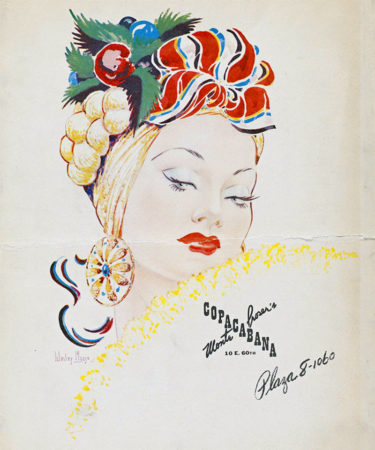New York City has a rich culinary history, owing both to its age and the waves of immigrants who have settled there over the centuries. In the late eighteenth century, the Sons of Liberty plotted revolution in Fraunces Tavern. In the late nineteenth century, Delmonico’s introduced à la carte fine dining to America. Speakeasies, nightclubs and extravagant restaurants arrived in the twentieth century.
We’ve highlighted menus covering 125 years of New York City dining, from an 1850s hotel with a stunning wine list, to a 1970s restaurant that claimed to be America’s most expensive. As you browse the menus, remember two things: if the prices seem low, inflation makes a big difference; if they seem high, they’re probably cents not dollars. All of the menus were digitized by the New York Public Library as part of their ‘What’s on the menu’ project.
Note: We’ve kept the images large, as many features have faded and they have small type. Just keep scrolling to see them all.
The Copacabana – 1943
The Copacabana nightclub opened in its doors in 1940 with Monte Proser’s name on the menu (and the lease). His partner? Infamous mafia boss Frank “the Prime Minister” Costello. You can view more of the menu here.
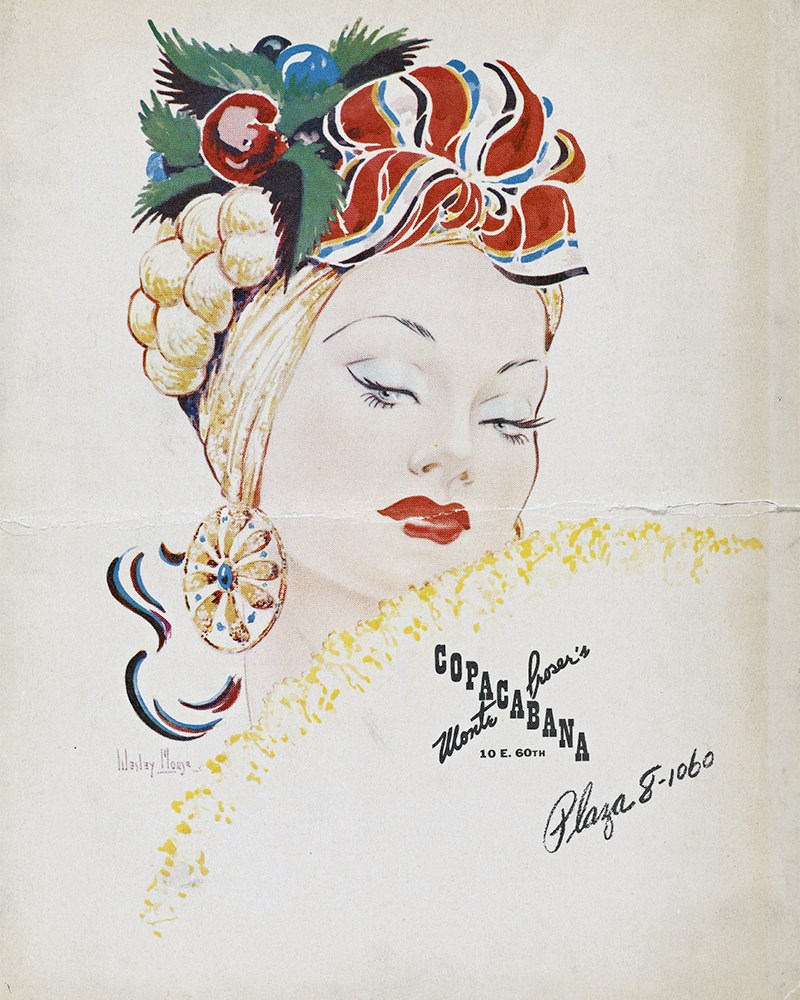
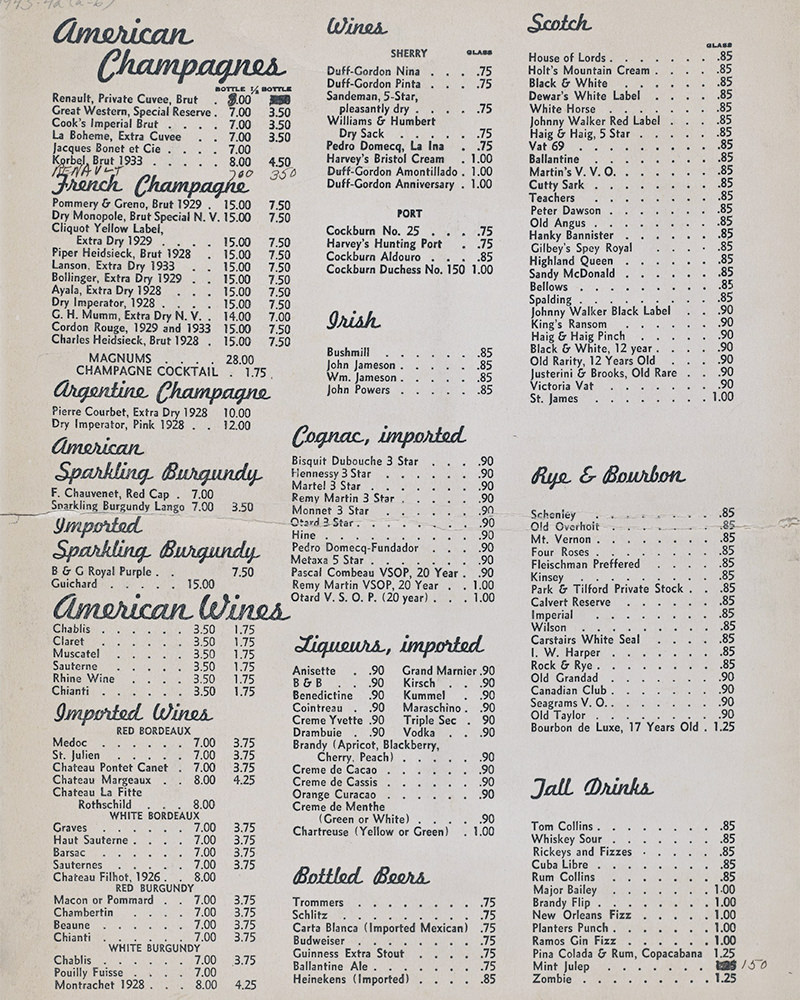
The Cotton Club – 1938
The Cotton Club was a well known “whites-only” Prohibition-era hotspot up in Harlem, but in the late 1930s it relocated south to Midtown. This menu, from 1938 is from the latter era. You can view the racist (and NSFW) cover here, as well as the song program.
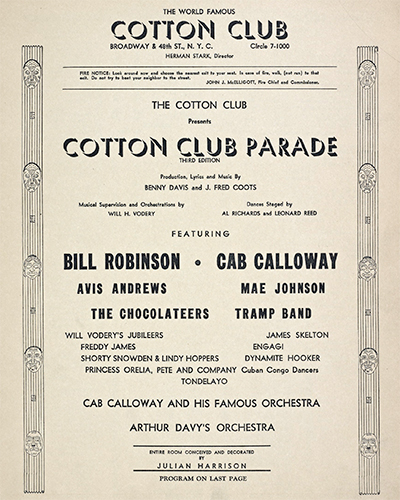
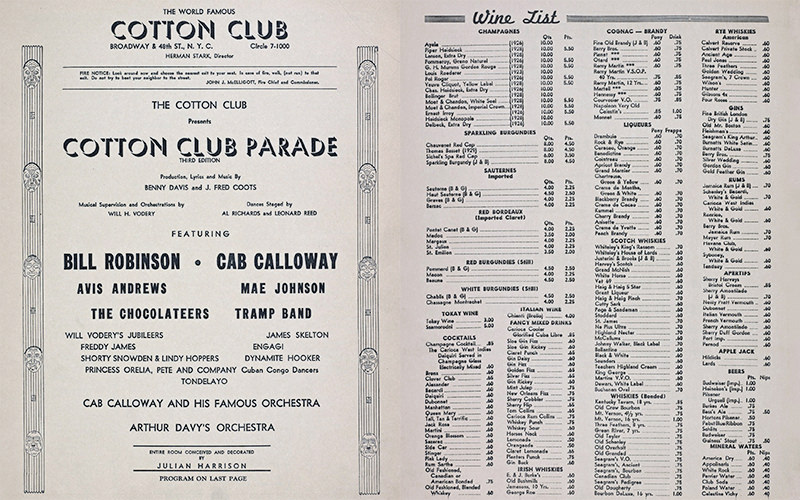
Delmonico’s – 1914
Originally opened in 1827, Delmonico’s moved to a number of Downtown locations following a series of fires. The restaurant was the first to offer à la carte fine dining in America. This menu, from the well-known South William Street location, features a concise but quite impressive wine list.
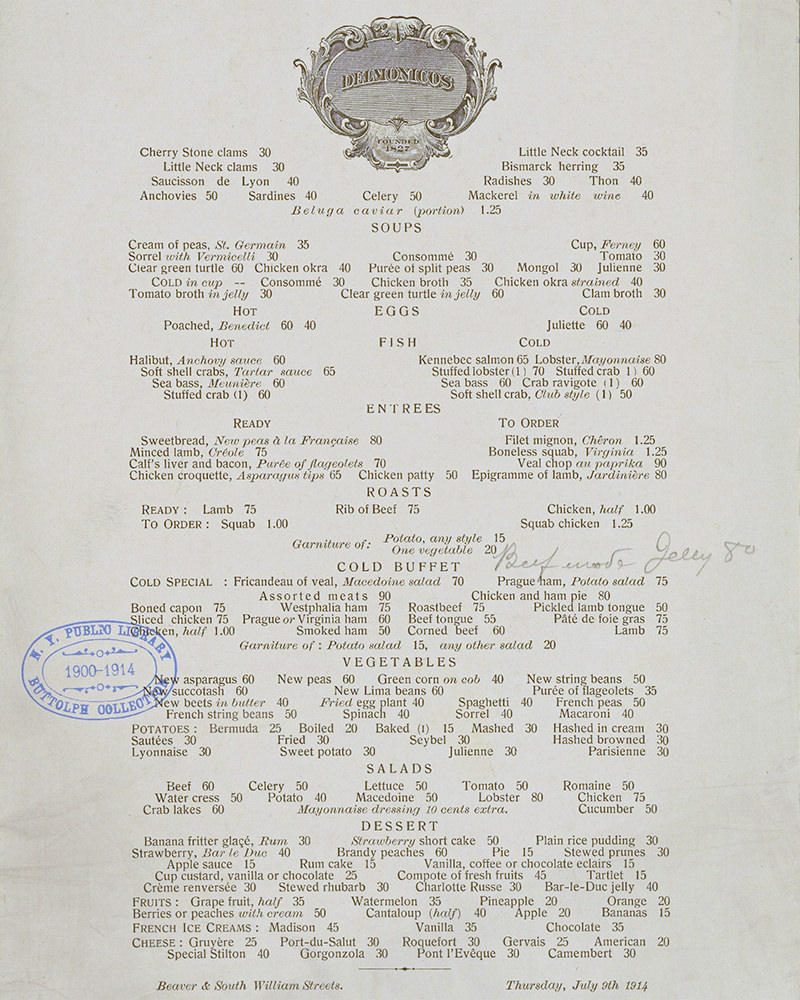
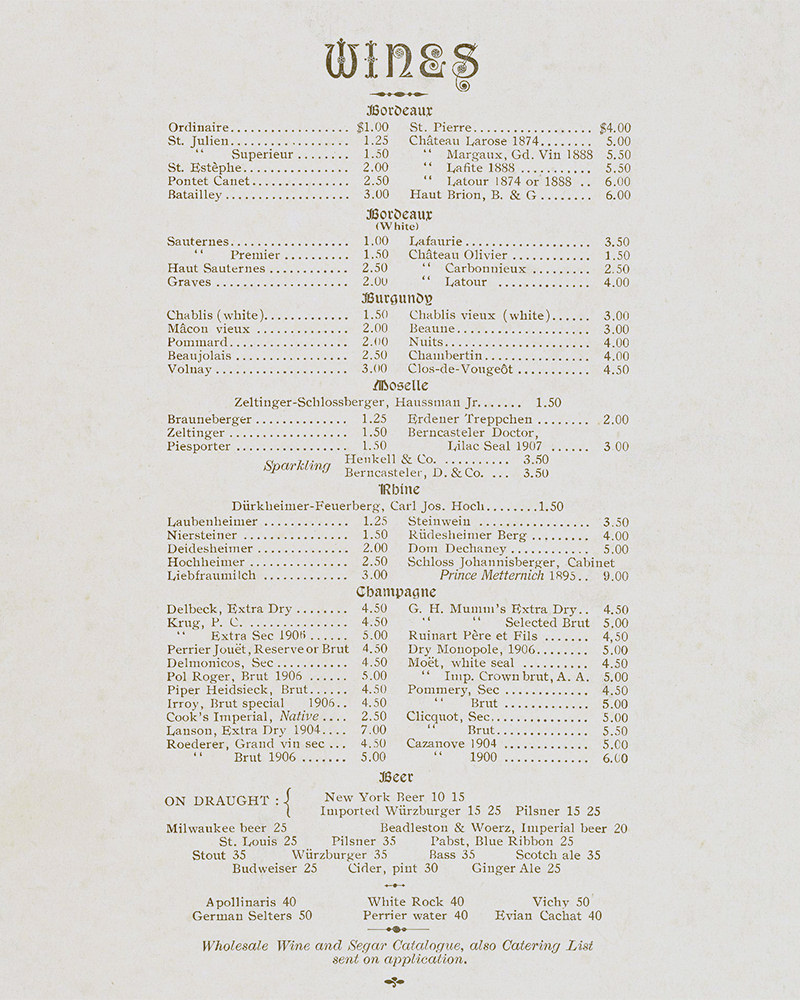
Dorlon’s Oyster House – 1900
In the nineteenth and early twentieth century, New York was home to countless oyster cellars (restaurants). Cheap local oysters and drinks made these establishments extremely popular. We highlighted the menu at Dorlon’s for the impressive selection — considering the year — of domestic and imported beers.
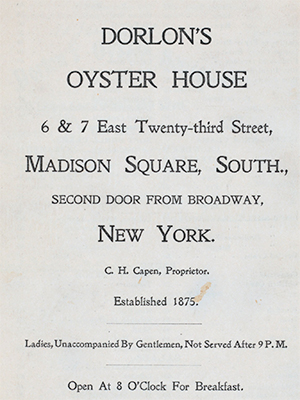
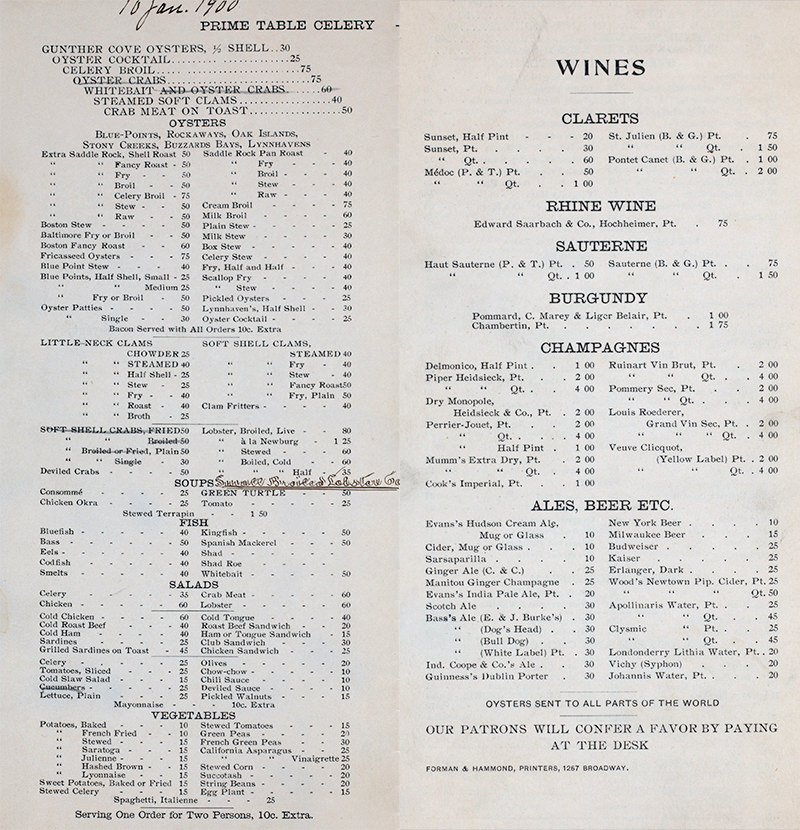
Fraunces Tavern – 1914
Fraunces Tavern played a key role in the American Revolution, serving as a meeting place for the Sons of Liberty. Today the tavern is a national historic landmark, a museum, and a restaurant.
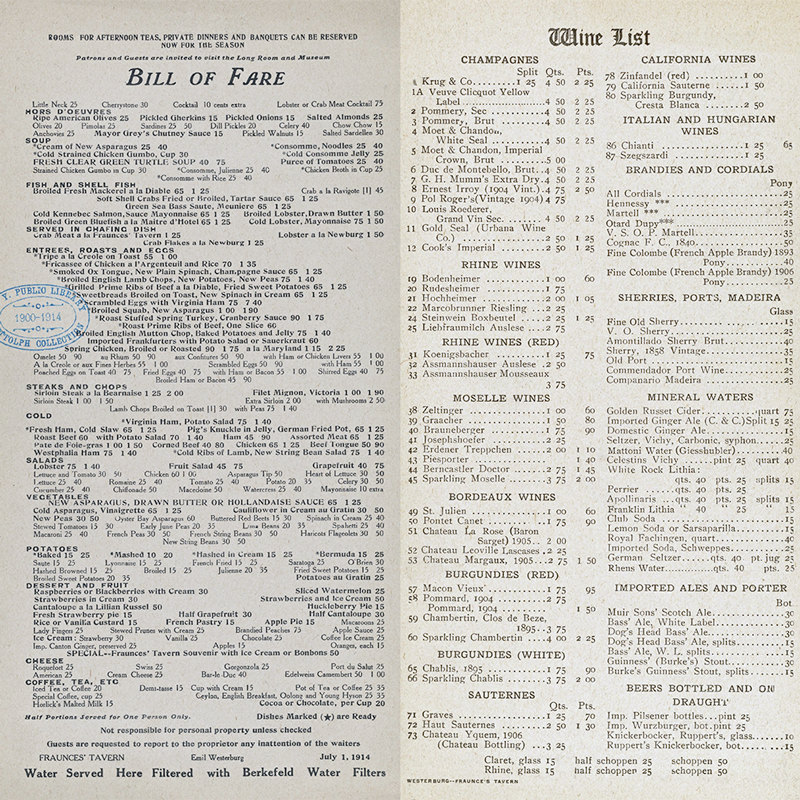
Grand Central Terminal Restaurant & Oyster Bar – 1955
“The Oyster Bar” at Grand Central Terminal is a New York City institution, famous for its oysters (obviously) and its well-preserved Guastavino tiled ceiling. The restaurant opened in 1913 (see a menu from 1917), along with the Terminal itself. This menu is from the mid-twentieth century.
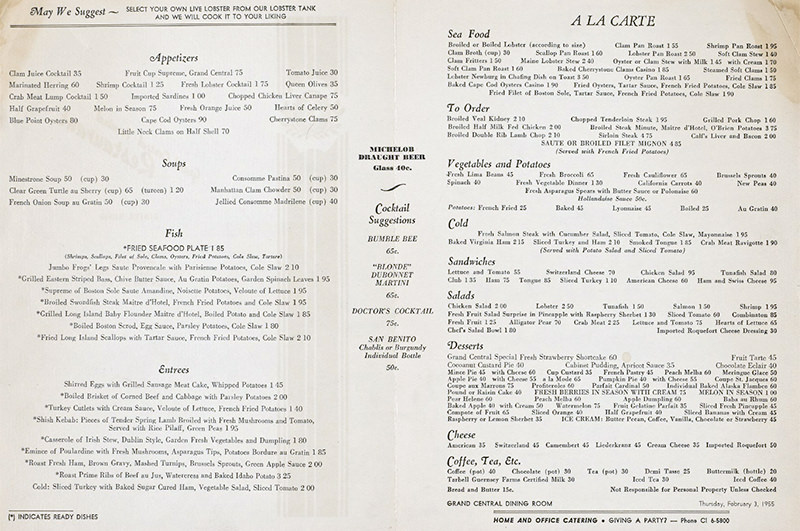
Irving House – 1852
There’s not much we know about Irving House, which appears to have been a restaurant and a hotel operating in the mid-nineteenth century. We’ve featured it for the sheer age of the menu and the impressive wine list, which is quite heavy with fortified wines, and includes notes of provenance (wine fraud was rampant in this era).
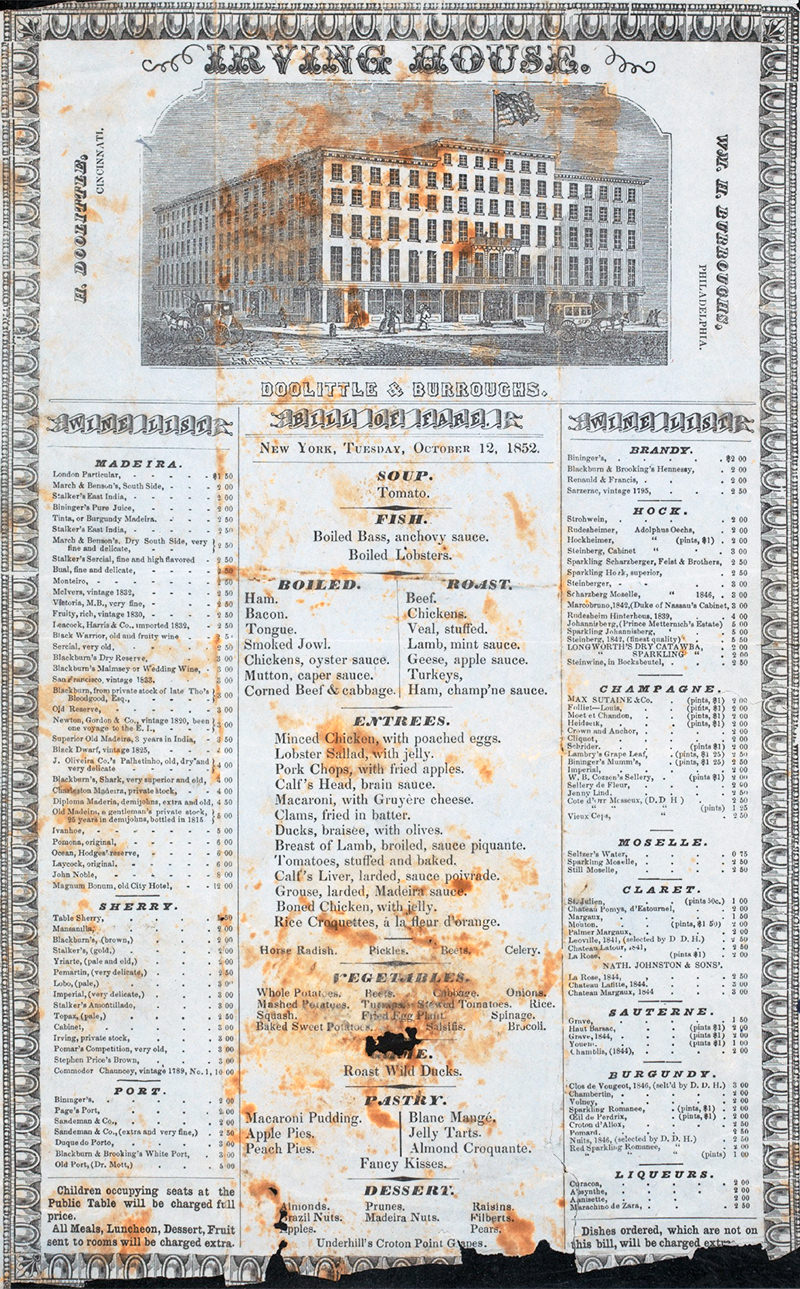
Keens – 1941
Keens Steakhouse, formerly known as Keen’s English Chop House, has been serving mutton chops (and other cuts of meat) on 36th Street since 1885, making it one of New York’s oldest continuously operating restaurants. You can take a look at a six-course reunion dinner for the NYU class of 1897 here.
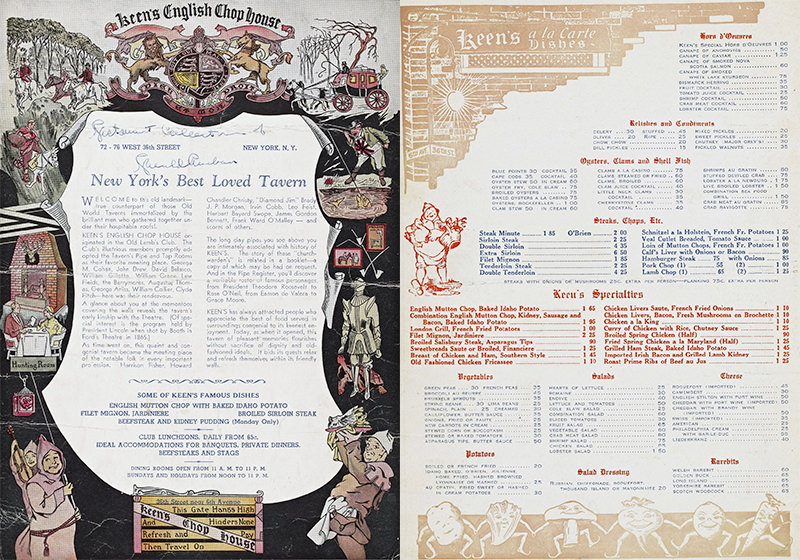
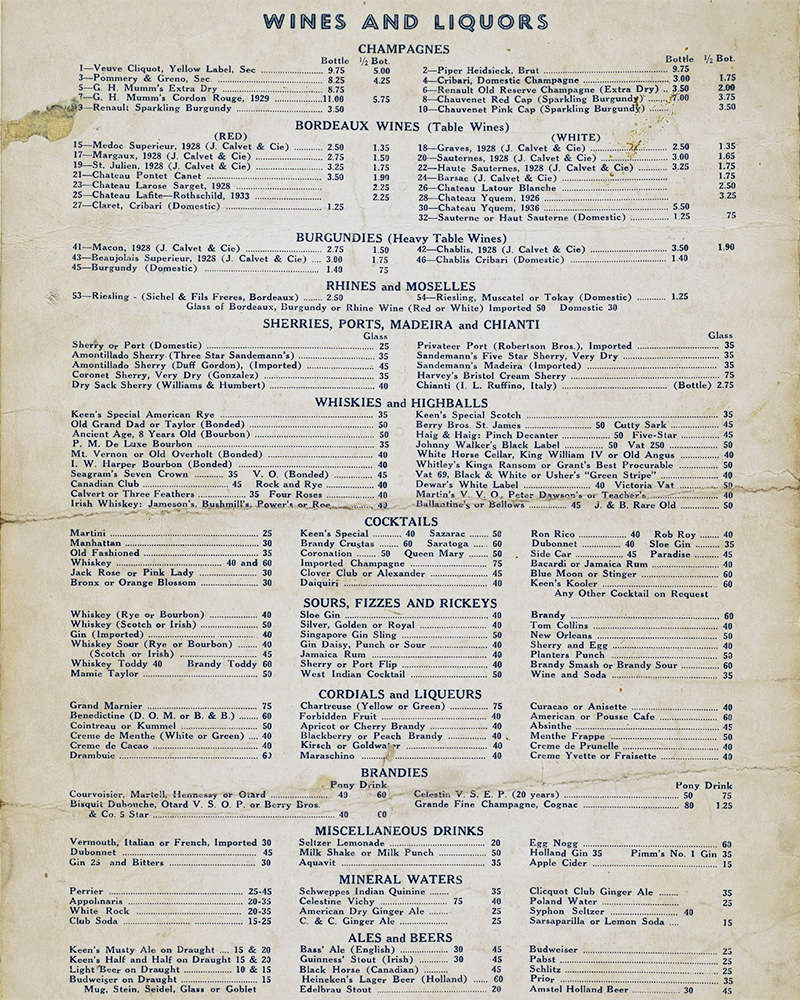
Oak Room at The Plaza – 1958
This menu is from the Oak Room (distinct from the also-famous Oak Bar), which opened in 1907 at the Plaza Hotel. Originally known as the Men’s Bar, it was temporarily shuttered during Prohibition. Following a series of controversies, the Oak Room and Bar were both shut down in 2011. They both are set to reopen in the future.
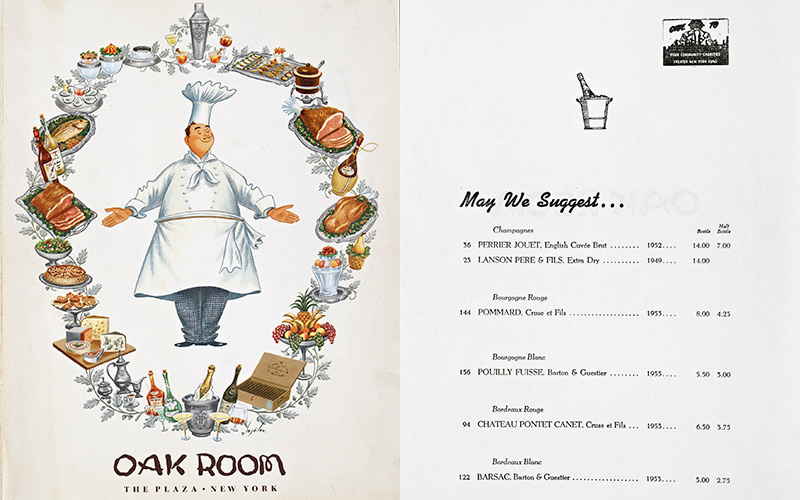
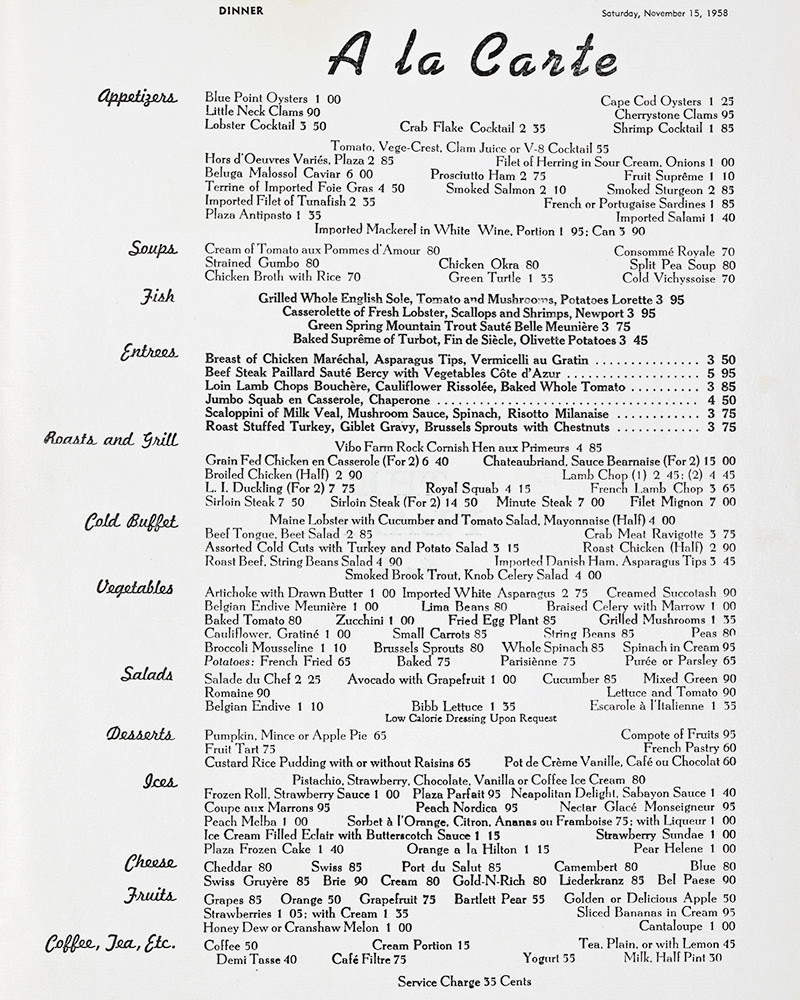
The Palace – 1976
The Palace, run by Frank Valenza, was known in the 1970s as the most expensive restaurant in America. The multi-course New Year’s Eve menu we found doesn’t have a price mentioned, but judging by the wine pairings — Dom Perignon, Montrachet, Laftite, Romanée-Conti & d’Yquem — we’re going to assume it’s out of our league.
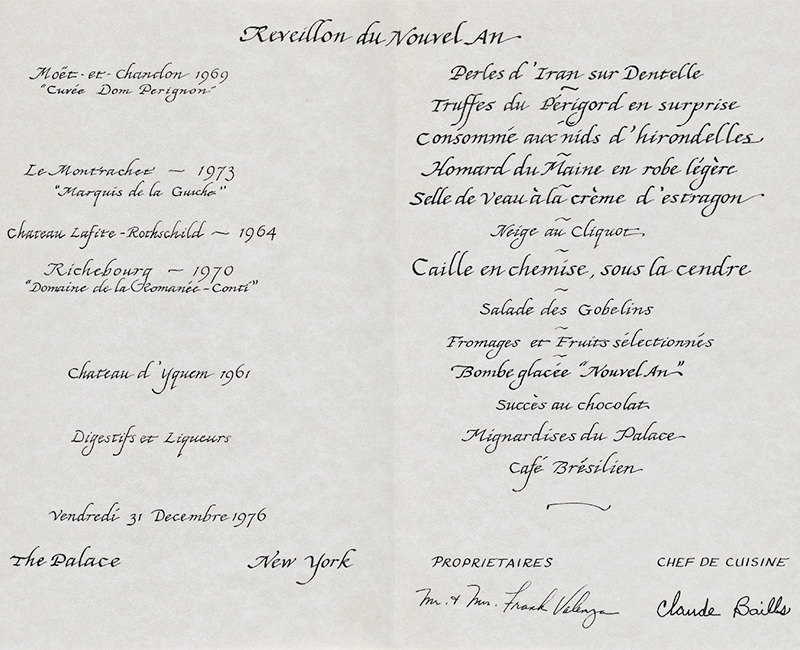
The Russian Tea Room – Date Unknown
Former members of the Russian Imperial Ballet opened the Russian Tea Room in 1927. Since then it has gone through a number of owners and incarnations, struggling through real estate fights and bankruptcy in 2002. Bought out of bankruptcy, the restaurant reopened in 2006. Below you’ll find a cocktail and vodka list. You can take a look at a different menu to see the sort of food on offer here.
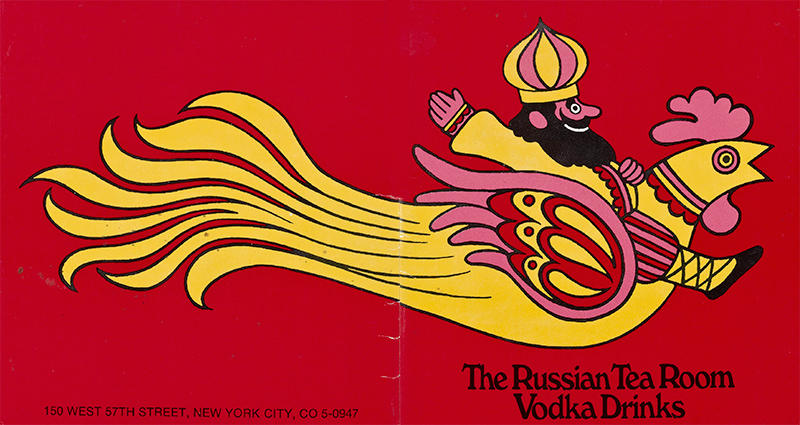
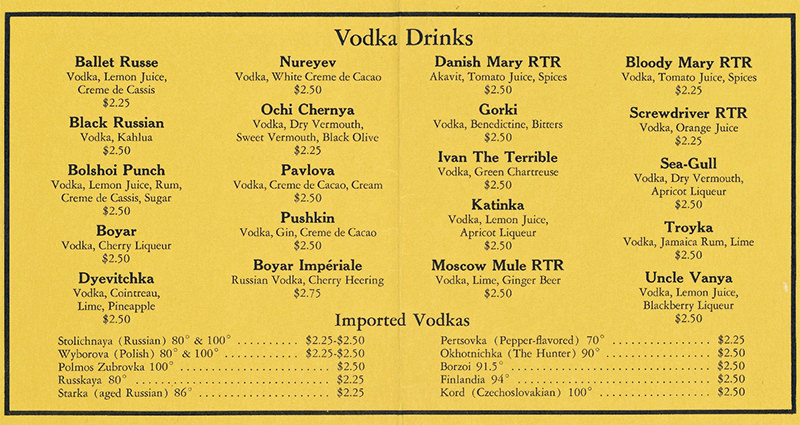
Tavern On The Green – 1950
Tavern On The Green, which originally opened in 1934, in Central Park, has gone through its ups and downs but it’s undeniably famous, due to its unparalleled location. We’ve highlighted the menu from 1950, with its extensive drink list.
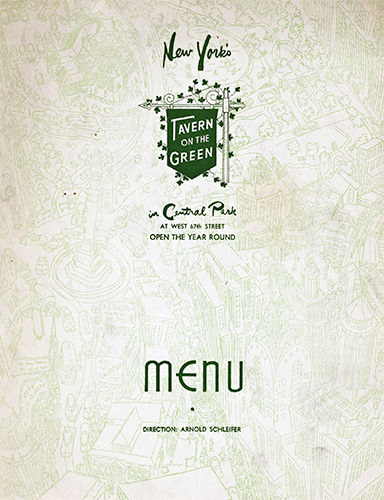
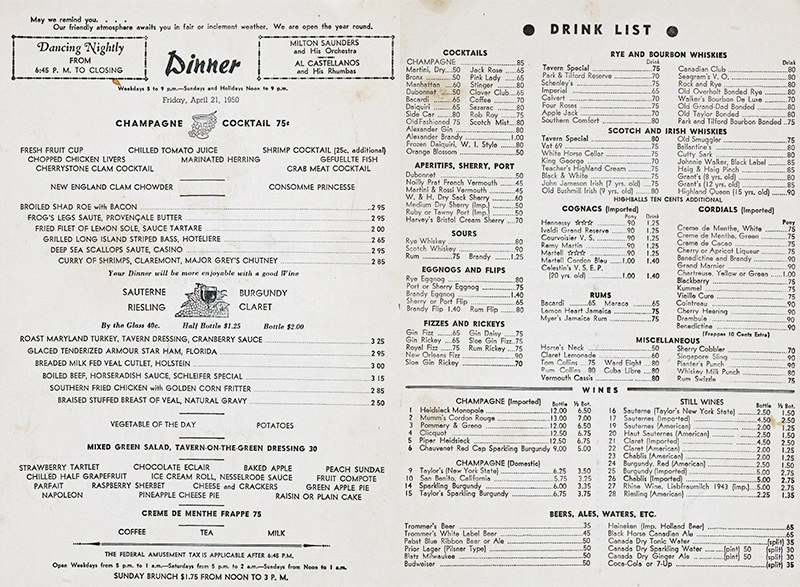
Top Of The Fair (World Fair) – 1964
The 1964 New York World’s Fair famously shone a spotlight on then-futuristic Space Age technologies being developed by America’s corporations — computers, modems and Disney Animatronic-powered presentations. Top Of The Fair, a 1,100-seat restaurant, and 400-seat cocktail lounge, towered above the fairgrounds. A heliport sat on the roof, ferrying passengers to and from Manhattan. Today it operates as a catering hall called Terrace On The Park.
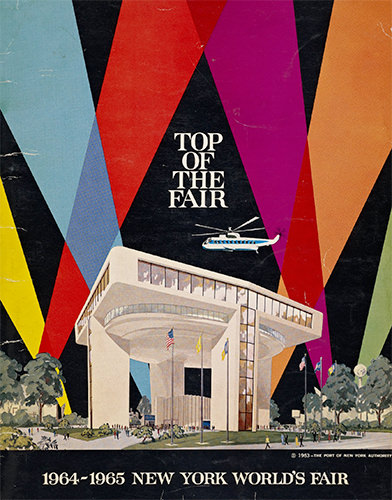
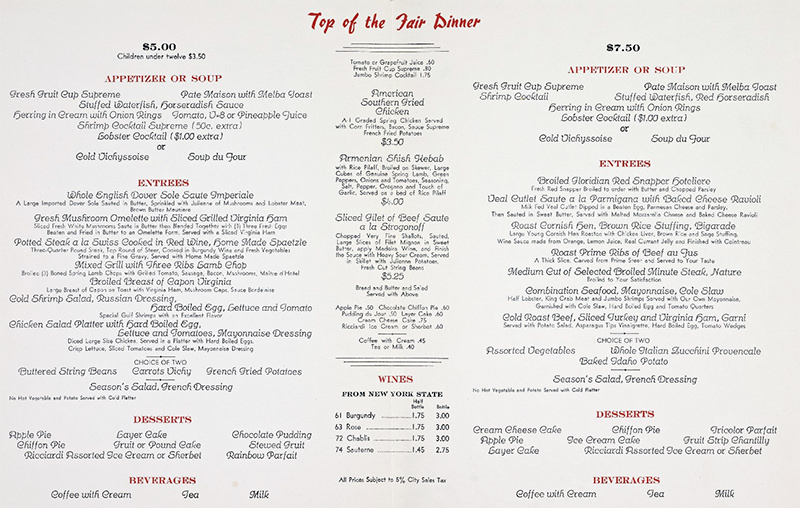
“21” Club – 1955
The famous “21” Club opened as a speakeasy in Greenwich Village in 1922. After a series of moves it landed at its current location in 1929, originally carrying the name Jack and Charlie’s “21” — which you’ll see on the menu below. The over-the-top drink selections make sense when you realize that the luncheon’s honoree, André Simon, was a famous wine writer and importer in the early-to-mid twentieth century.
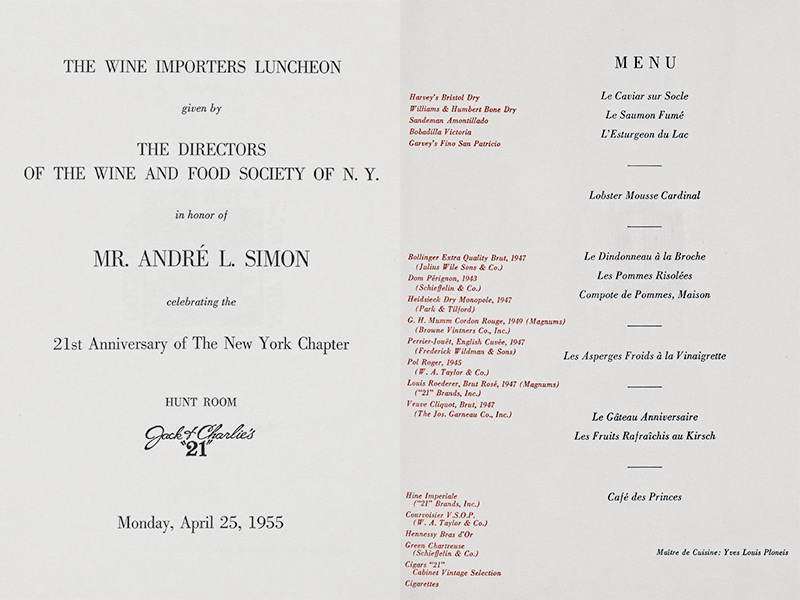
Grand Banquet and Social Re-Union of the
Prohibitionists Of The City And County Of New York – 1892
Since we’ve looked at extravagant wine lists and former speakeasies, we thought it would be interesting to see what a meal was like for the foes of those that enjoy a drink or two. This 1892 dinner at the Columbia Banquet Rooms on the south side of Union Square is the answer. Dinner, dessert, and “toasts” such as “Jack the Giant Killer,” “Hustling,” “The Silent Man in Politics,” and as a closer, “Why I am a Prohibitionist.”
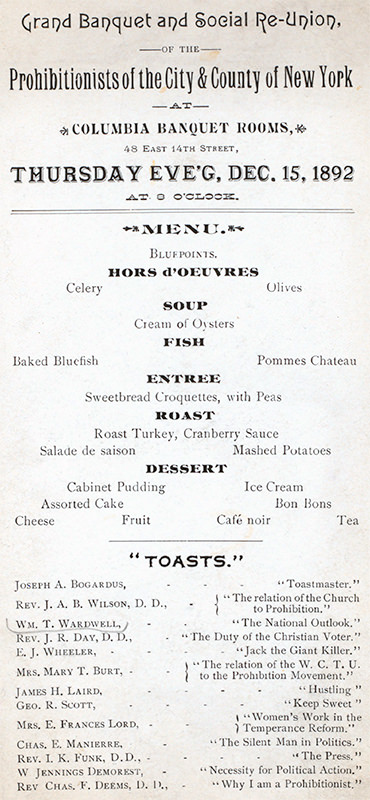
All Images Courtesy of The New York Public Library.
